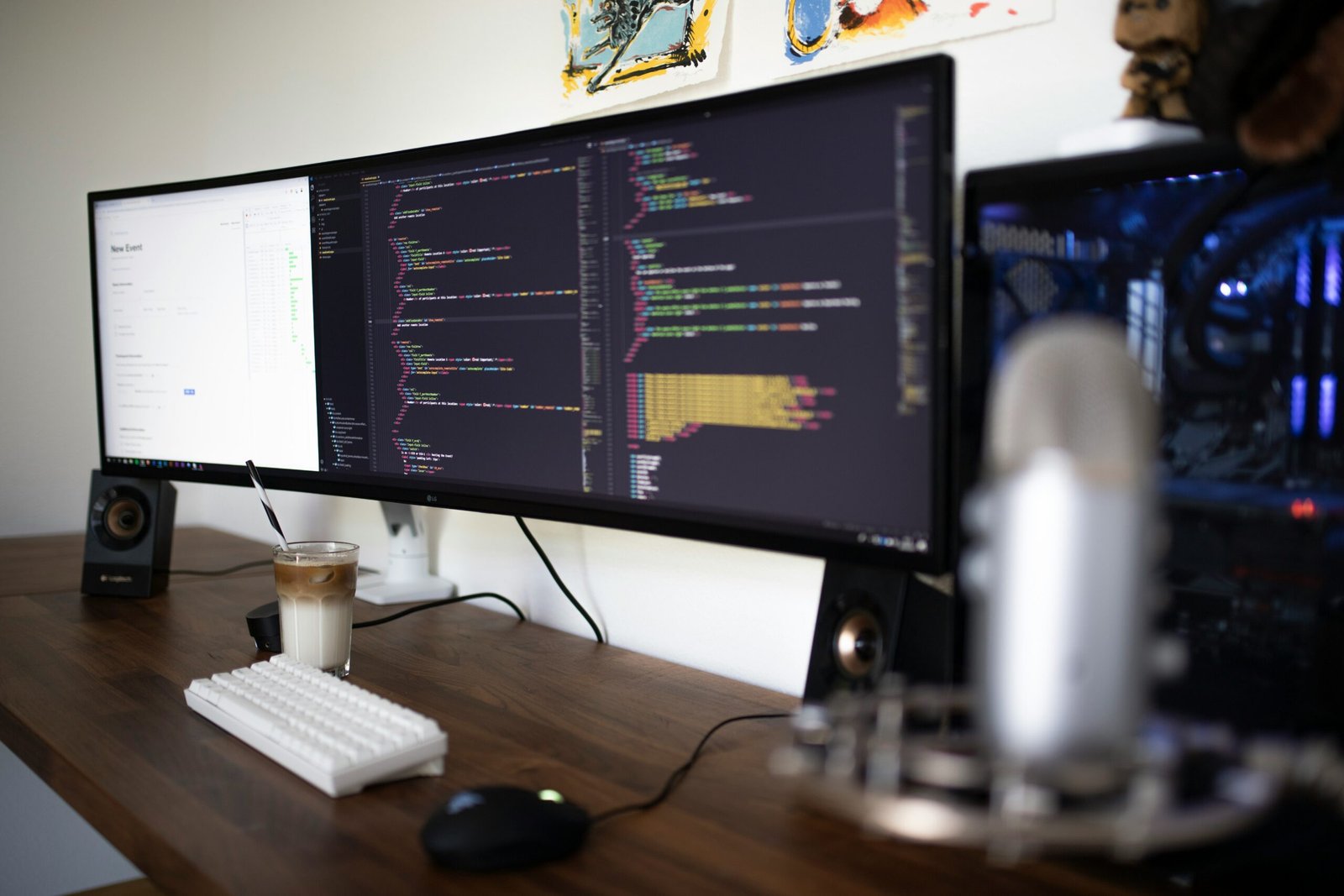Introduction
When it comes to computer programming, there are two terms that often come up: scripting and programming. While both involve writing code to instruct computers, there are some key differences between the two. In this article, we will explore the difference between scripting and programming, and how they are used in various contexts.
Scripting and programming are both methods of writing code to automate tasks, but they differ in their approach and purpose. Scripting is typically used for smaller, more specific tasks, while programming is used for larger, more complex applications.
Scripting languages, such as JavaScript or Python, are often used to write scripts. These scripts are usually interpreted and executed directly by a software application or a runtime environment. They are often used to automate repetitive tasks or to perform specific functions within a larger program.
On the other hand, programming languages, such as Java or C++, are used to develop full-fledged applications. These languages are compiled into machine code that can be executed by the computer’s processor. Programming languages allow for more complex logic and control flow, making them suitable for building large-scale software systems.
Another key difference between scripting and programming is the level of abstraction. Scripting languages tend to have a higher level of abstraction, meaning they provide more built-in functionality and require less manual coding. This makes scripting languages more accessible to beginners and allows for faster development of simple tasks.
Programming languages, on the other hand, offer a lower level of abstraction, requiring developers to write more detailed and explicit code. This level of control allows for greater flexibility and optimization, making programming languages more suitable for complex applications that require fine-tuning and performance optimization.
In summary, while both scripting and programming involve writing code to instruct computers, they differ in their approach, purpose, and level of abstraction. Scripting is used for smaller, specific tasks and offers a higher level of abstraction, while programming is used for larger applications and offers a lower level of abstraction. Understanding these differences can help developers choose the right tool for the job and optimize their code for efficiency and functionality.
What is Scripting?
Scripting refers to the process of writing scripts, which are a series of instructions or commands that are executed by a computer. Scripts are typically written in scripting languages, which are high-level programming languages that are interpreted rather than compiled. This means that the code is executed line by line, rather than being converted into machine code before execution.
Scripting languages are often used for automating tasks, such as system administration, web development, and data processing. They are designed to be easy to learn and use, with syntax that is more forgiving and flexible than traditional programming languages.
One of the most popular scripting languages is JavaScript. JavaScript is a versatile language that can be used both on the client-side and server-side of web development. It is primarily used to add interactivity and dynamic content to websites, such as form validation, image sliders, and interactive maps.
Another commonly used scripting language is Python. Python is known for its simplicity and readability, making it a great choice for beginners. It is widely used for web development, scientific computing, data analysis, and automation. Python’s extensive library ecosystem and large community make it a powerful tool for a wide range of applications.
Perl is another scripting language that is often used for system administration, web development, and network programming. It is known for its strong text processing capabilities and regular expression support. Perl’s motto is “There’s more than one way to do it,” reflecting its flexibility and versatility.
Scripting languages are also used in the field of game development. Lua, for example, is a lightweight scripting language that is often used as a scripting engine in video games. It is known for its simplicity and speed, making it a popular choice among game developers.
In conclusion, scripting is a powerful technique that allows developers to automate tasks and add interactivity to their applications. Whether you are a web developer, system administrator, or game developer, learning a scripting language can greatly enhance your skills and productivity.
What is Programming?
Programming, on the other hand, refers to the process of writing programs, which are sets of instructions that tell a computer how to perform a specific task or solve a particular problem. Programs are typically written in programming languages, which are formal languages that are designed to be compiled or interpreted by a computer.
Programming languages are used to create a wide range of software applications, from simple command-line tools to complex web and mobile applications. They provide a more structured and powerful way of writing code, with features such as data types, control structures, and object-oriented programming.
Programming is a highly creative and logical process that requires problem-solving skills and attention to detail. It involves breaking down a complex problem into smaller, more manageable tasks and then writing code to solve each task. Programmers need to have a deep understanding of the programming language they are using, as well as the specific problem they are trying to solve.
One of the key aspects of programming is the ability to think algorithmically. Algorithms are step-by-step procedures that outline the logic behind a program. They are essential for solving complex problems and optimizing the performance of a program. Programmers often spend a significant amount of time designing and refining algorithms before writing the actual code.
Another important aspect of programming is debugging. Debugging is the process of identifying and fixing errors or bugs in a program. It involves carefully analyzing the code, using tools and techniques to trace the execution of the program, and making changes to eliminate the errors. Debugging is an essential skill for programmers, as even a small error can have a significant impact on the functionality of a program.
Programming is not limited to writing code. It also involves testing and documenting the code. Testing is the process of verifying that a program works as expected and meets the requirements. It involves running the program with different inputs and checking the outputs. Documentation, on the other hand, involves writing clear and concise explanations of the code, its purpose, and how to use it. Good documentation is essential for maintaining and collaborating on a codebase.
In conclusion, programming is the process of writing programs using programming languages to solve specific problems or perform tasks. It requires creativity, logical thinking, problem-solving skills, and attention to detail. Programmers need to think algorithmically, debug their code, test it, and document it. Programming is a versatile skill that is in high demand in various industries, from software development to data analysis and artificial intelligence.
4. Use Cases
Another key difference between scripting and programming lies in their use cases. Scripting languages are often used for automating repetitive tasks, such as file manipulation, system administration, and web scraping. They are also commonly used in web development for tasks like form validation and client-side interactions. Programming languages, on the other hand, are used for developing a wide range of applications, from desktop software to mobile apps and embedded systems. They provide more control and flexibility, making them suitable for complex projects that require precise control over hardware and software interactions.
5. Development Speed
Scripting languages are known for their quick development speed. Since scripts are interpreted and executed line by line, developers can see the results of their changes immediately. This allows for rapid prototyping and iterative development. Programming languages, on the other hand, often require more time for development due to the additional step of compilation. However, this extra time can result in more efficient and optimized code, especially for large-scale projects. Additionally, programming languages often have more advanced debugging tools and performance optimization techniques, which can help streamline the development process in the long run.
6. Portability
Scripting languages are generally more portable than programming languages. Scripts can be written once and run on multiple platforms without the need for modifications. This is because scripting languages are typically interpreted by a runtime environment, which abstracts away the underlying hardware and operating system. Programming languages, on the other hand, often require compiling the code into machine language specific to the target platform. This can make programs less portable and require additional effort to make them run on different hardware or operating systems.
7. Performance
When it comes to performance, programming languages often have the upper hand. Since programs are compiled into machine language, they can take advantage of low-level optimizations and hardware-specific features. This allows for faster and more efficient execution, making programming languages suitable for computationally intensive tasks. Scripting languages, on the other hand, sacrifice performance for flexibility and ease of use. While they may not be as fast as compiled programs, scripting languages excel in tasks that prioritize rapid development and quick prototyping.
In conclusion, scripting and programming have distinct differences in terms of execution, flexibility, complexity, use cases, development speed, portability, and performance. Understanding these differences can help developers choose the right tool for the job and make informed decisions when it comes to software development.
Examples of Scripting and Programming Languages
Here are some examples of popular scripting and programming languages:
Scripting Languages:
- Python
- Perl
- Ruby
- JavaScript
- Shell scripting (e.g., Bash)
- PHP
- PowerShell
- VBScript
- AWK
Programming Languages:
- C
- C++
- Java
- Python
- JavaScript
- Rust
- Go
- Swift
- Scala
Scripting languages are primarily used for automating tasks, creating web applications, and prototyping. They are often interpreted and have a simpler syntax compared to programming languages. Some popular scripting languages include Python, Perl, Ruby, and JavaScript. Python, in particular, is widely used for its readability and versatility.
On the other hand, programming languages are used for developing complex software applications and systems. They are compiled or interpreted and have a more extensive set of features and capabilities. Examples of programming languages include C, C++, Java, and Python. C and C++ are commonly used for system programming and low-level development, while Java is known for its platform independence and object-oriented programming paradigm.
In recent years, there has been an increasing demand for newer programming languages such as Rust, Go, Swift, and Scala. These languages offer unique features and performance optimizations that cater to specific use cases. For example, Rust is known for its memory safety and concurrency guarantees, making it suitable for systems programming. Go, developed by Google, focuses on simplicity and efficiency, making it ideal for building scalable web services. Swift, developed by Apple, is designed for iOS and macOS app development, offering a modern and safe programming language. Scala, on the other hand, combines object-oriented and functional programming paradigms, providing a powerful and expressive language for building scalable and concurrent applications.


